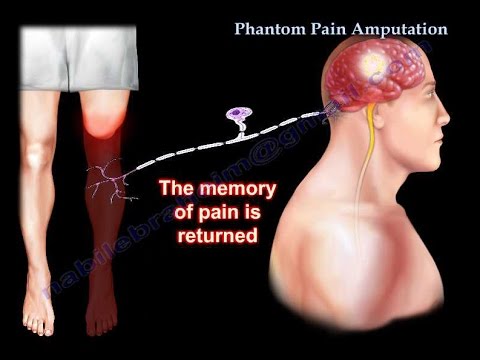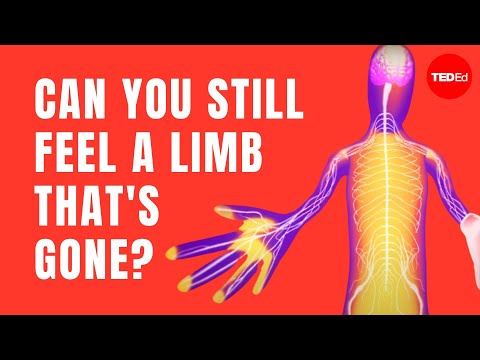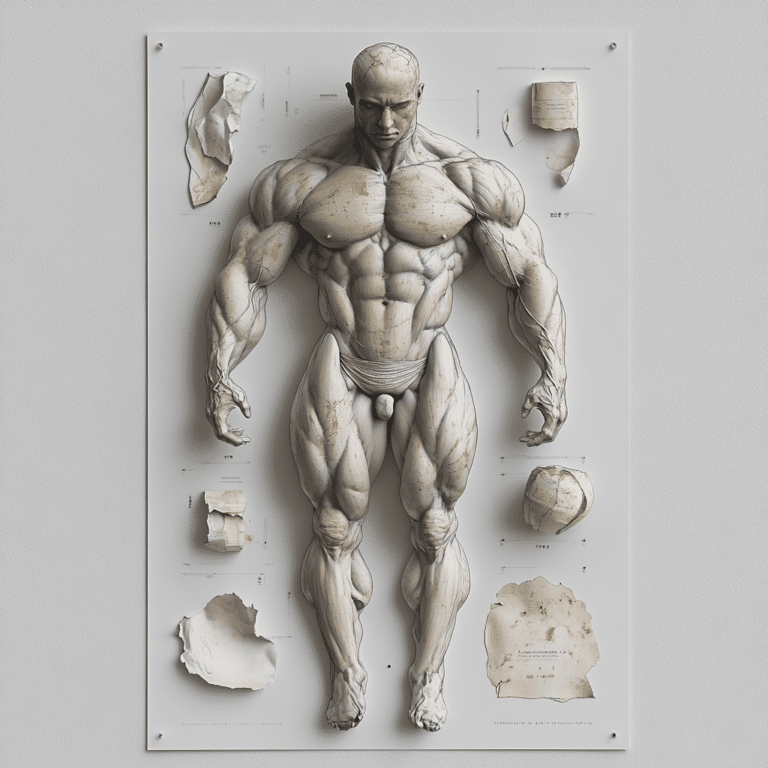Phantom pain is a fascinating and often heartbreaking phenomenon. It occurs when someone feels pain in a limb or body part that has been amputated or is no longer there. It’s mind-boggling how our brains can create sensations without a physical trigger in sight. This phenomenon sheds light on the brain’s wiring and how emotional factors can influence our perception of pain. In this article, we’ll dive into the science behind phantom pain and explore aspects that may leave you surprised.

Understanding Phantom Pain: The Science Behind the Sensation
Phantom pain challenges our understanding of how pain works. Researchers have dived deep into the neural pathways and regions of the brain involved. They’ve discovered that certain areas can misfire, leading to pain that feels incredibly real. Think of your brain as a complex network, much like a well-engineered gym. If one wire gets crossed, the whole system can light up in unexpected ways. This suggests that what we feel is influenced not only by physical injuries but also by emotional responses and the intricate connection between mind and body.
Consider how the brain processes sensations. It can become quite interesting when misinterpretation occurs. Imagine you’re at the gym, lifting weights and suddenly feeling a piercing pain in your arm. You look down and realize there’s no injury. What gives? This kind of “mimicking” pain shows us that our perception can be deceiving. The mind-body connection is strong, and understanding this can offer valuable insights not just in medicine but also in how we approach our mental and physical workouts.
Psychologists and neurologists continuously study phantom pain. They’re interested in how the brain adapts or fails to adapt after losing a body part. Feelings of grief, anxiety, and frustration can amplify the sensations, creating a cycle of discomfort that’s hard to break. By understanding the emotional weight that phantom pain carries, we can better address it, paving the way for both effective treatment plans and improved mental health support.

Top 5 Surprising Aspects of Phantom Pain

1. Emotions Wheel: The Emotional Impact of Phantom Pain
Phantom pain isn’t just about the physical experience; it’s also deeply emotional. The emotions wheel provides a framework for breaking down the complex feelings individuals face after losing a limb. Patients often grapple with grief over their lost body part, frustration with their new reality, and anxiety about what lies ahead. It’s not uncommon for these feelings to amplify the sensation of pain itself, creating a cycle that’s tough to escape.
Recognizing these emotional responses is crucial. It helps both patients and healthcare providers. Understanding how emotions influence pain perception allows for the development of more effective treatments that integrate mental health support. You wouldn’t ignore your diet at the gym; don’t ignore your emotional health either!
2. Walking Wake: How Phantom Pain Affects Daily Life
Living with phantom pain can feel like you’re caught in a “walking wake.” That term perfectly encapsulates what many individuals go through—constantly experiencing discomfort while trying to maintain everyday life. Daily activities, social interactions, and job performance can suffer immensely. Think of amputation survivor Tommy McHugh. He openly shares his struggles on social media, illustrating the day-to-day reality of managing phantom pain while still trying to enjoy life.
Tommy’s story highlights the importance of societal awareness and compassion. Addressing phantom pain goes beyond medical treatment; it necessitates understanding from the community. Just as we rally behind someone when they achieve new fitness goals, we should rally around those facing the lonely battle of phantom pain. Compassion is a powerful ally.
3. Fast Signs: Early Indicators of Phantom Pain
Not everyone who undergoes an amputation will experience phantom pain. However, there are fast signs to look for. Research indicates that pre-existing pain levels before amputation, psychological state, and even the nature of the amputation play significant roles. Anxiously attentive individuals, for instance, might be more prone to neuron misfiring, increasing the odds of feeling phantom sensations afterward.
So, what can you do if you or someone you know is facing this challenge? Be aware of the signs and foster open conversations about emotional as well as physical wellbeing. The earlier you recognize these signs, the better equipped you’ll be to handle the situations that may arise.
4. Complications of Compassion Fatigue: Caregiver Perspectives
Compassion fatigue doesn’t just affect those who suffer from phantom pain; it can also weigh heavily on caregivers. These individuals experience an emotional toll that can lead to burnout. That’s why it’s so crucial for caregivers to seek support and prioritize their mental health. They should not overlook their own wellbeing while supporting someone else’s challenges.
Studies from the American Psychological Association reveal that caregivers who maintain emotional health can provide much better support. This means less “walking wake” for them too! Check in on your friends who are caregivers; a little kindness goes a long way!
5. Growing Pains: The Evolution of Treatment Methods
When it comes to treating phantom pain, the landscape is continuously evolving. Techniques once deemed effective are replaced or enhanced with newer, more innovative methods. Mirror therapy, for example, uses visual feedback to help “rewire” the brain. It’s like switching from regular pizza to gourmet Ledo Pizza; you’re still getting your fix but with a twist.
Advanced options like neurostimulation are also paving the way for better relief. Even virtual reality—yes, virtual reality!—has entered the mix. By creating immersive environments, patients can distract their minds and retrain brain responses. This holistic approach to pain management blends physical and psychological aspects more than ever before.

Final Thoughts: Navigating the Phantom Pain Puzzle
Phantom pain might seem mysterious, but it’s far from insurmountable. As we peel back the layers, we uncover emotional insights, daily life impacts, and novel treatment methods. The integration of emotional awareness and up-to-date medical treatments leads to better coping strategies for those affected by phantom pain.
By addressing phantom pain holistically, society can contribute to a deeper healing journey. It’s about moving from a position of pain to one of empowerment. So, whether you’re lifting weights at the gym or navigating life’s ups and downs, remember: understanding—and compassion—can shift the balance from suffering to strength.

Phantom Pain: Surprising Facts and Trivia
Discovering the Mysteries Behind Phantom Pain
Did you know that phantom pain affects around 60-80% of amputees? This intriguing phenomenon might leave you scratching your head, as it feels like pain is coming from a body part that’s no longer there. The brain’s way of “remembering” sensations can lead to a mix of sensations, including tingling or itching where the limb used to be. To put it into perspective, think about how a sleep debt can catch up with you, leaving you groggy and disoriented; phantom pain often stalks those who’ve lost limbs just as relentlessly.
Interestingly, some studies suggest that people living with phantom pain can find relief through alternative methods, like kratom, thanks to its potential benefits in managing pain responses. Those in the know can tap into lingo like “pain modulation” when discussing how substances can influence pain perceptions. So, if you or someone you know has experienced this uncommon pain, the world is bursting with options, much like the variety in Michael Imperioli’s movies and TV shows that range from drama to adrenaline-filled thrillers.
Connecting Emotions with Phantom Pain
Emotional factors play a significant role in phantom pain. Individuals often report extreme sensations tied to memories or feelings. Picture this: you’re tuned into an emotional anime storyline, similar to the intensity found in the tales told through anime platforms like Allanime. When real emotions collide with physical sensations, the results can be mind-boggling. Sometimes, exploration through therapy or art can serve as a channeling tool, allowing individuals to process their feelings related to trauma, just as Psalm 465 resonates with emotional healing.
Additionally, recent research suggests that certain treatments like the Xulane patch, often used for hormonal regulation, might inadvertently assist people experiencing phantom pain by altering the brain’s wiring. It may seem like a stretch, but with new discoveries about brain plasticity, patients are uncovering uncharted territories in pain relief and emotional support. With that in mind, navigating the medical landscape for solutions is essential, particularly as healthcare continues to evolve—especially with emerging Covid Variants flirts with public safety that brings anxiety and fear. It’s vital to keep an open line of communication with healthcare professionals during such transitions.
In summary, the secrets of phantom pain are surprising and layered, reflecting a blend of emotional, physical, and psychological elements. The pursuit of knowledge opens up potential avenues for relief, showing that while the journey can be complex, there’s always hope on the horizon. Whether examining the intricate connections between mind and body or exploring innovative solutions, like using a home mortgage calculator to budget for new therapies, the conversation around phantom pain is just warming up.



























